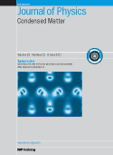
JOURNAL OF PHYSICS-CONDENSED MATTER
Scope & Guideline
Unlocking New Dimensions in Condensed Matter Studies.
Introduction
Aims and Scopes
- Condensed Matter Physics:
The journal primarily focuses on the fundamental aspects of condensed matter physics, exploring the interactions, behaviors, and properties of solid and liquid materials. - Quantum Materials:
Research on quantum materials, including topological insulators, quantum magnets, and superconductors, is a significant area of interest, emphasizing their unique electronic and magnetic properties. - Nanotechnology and Nanomaterials:
The journal covers studies related to nanotechnology, including the synthesis, characterization, and applications of nanomaterials, highlighting their unique properties at the nanoscale. - Magnetism and Magnetic Materials:
A core area of research includes the study of magnetic materials, covering topics such as magnetic phase transitions, magnetocaloric effects, and the development of new magnetic materials. - Electronic and Optical Properties:
Research on the electronic and optical properties of materials, including studies on semiconductors, photonics, and optoelectronic devices, plays a crucial role in the journal's scope. - Machine Learning and Computational Physics:
The journal increasingly incorporates research utilizing machine learning and computational methods to predict material properties and understand complex physical phenomena.
Trending and Emerging
- Topological Phases and Quantum Phenomena:
There is a growing interest in topological phases and their implications for quantum phenomena, including studies on topological insulators, Weyl semimetals, and their applications in quantum computing. - Advanced Characterization Techniques:
Emerging techniques such as resonant inelastic x-ray scattering and advanced electron microscopy are being increasingly applied to probe the electronic and magnetic properties of materials at the atomic level. - Machine Learning Applications:
The integration of machine learning into materials science research is on the rise, with applications in predicting material properties, optimizing synthesis routes, and understanding complex interactions. - 2D Materials and Heterostructures:
Research on two-dimensional materials, including graphene and transition metal dichalcogenides, along with their heterostructures, is rapidly expanding, focusing on their unique electronic and optical properties. - Quantum Transport Phenomena:
Quantum transport phenomena, particularly in nanostructures and low-dimensional systems, are trending, reflecting an increased understanding of how quantum effects influence transport properties. - Magnetoelectric and Multiferroic Materials:
There is a notable increase in research focused on magnetoelectric and multiferroic materials, driven by their potential applications in spintronics and next-generation electronic devices.
Declining or Waning
- Traditional Superconductors:
Research on traditional superconductors has seen a decline, as interest shifts towards new materials and mechanisms, particularly in high-temperature superconductors and exotic superconducting phases. - Classical Magnetism:
Classical studies of magnetism, particularly those focusing on well-established models without new advancements or applications, appear less frequently as researchers explore more complex magnetic systems. - Static Properties of Materials:
There has been a noticeable decrease in papers focusing solely on the static properties of materials, as dynamic and time-resolved studies gain prominence in understanding material behaviors. - Low-dimensional Systems:
Research specifically centered on low-dimensional systems, while still relevant, has experienced a decrease in volume as the field has matured and many fundamental questions have been addressed.
Similar Journals

Lithuanian Journal of Physics
Connecting Scholars through Groundbreaking ResearchWelcome to the Lithuanian Journal of Physics, an esteemed publication helmed by the Lithuanian Physical Society, dedicated to advancing the field of physics and astronomy. Established in 2008 and continually publishing insightful research through 2024, this journal aims to provide a platform for high-quality scholarly articles that contribute to the understanding of various physical phenomena. With a steady presence in the academic landscape, the journal is currently ranked in the fourth quartile of the Physics and Astronomy category and is positioned at the 18th percentile in its Scopus ranking, reflecting its niche focus and accessibility for researchers and students alike. Although currently not operating under an open access model, the journal remains a vital resource for professionals seeking to stay informed on the latest developments in the field. The Lithuanian Journal of Physics invites contributions that inspire collaboration and innovation in physical sciences, making it an invaluable resource for the global scientific community seeking to expand knowledge within this dynamic field.

Computational Condensed Matter
Connecting Ideas and Advancements in Condensed Matter PhysicsComputational Condensed Matter, a reputable journal published by Elsevier, serves as a critical platform for advancing the understanding of condensed matter physics and related fields. Since its inception in 2014, the journal has become a pivotal resource for researchers and professionals dedicated to exploring electronic, optical, and magnetic materials, as well as materials chemistry and general materials science. With its current standing in the Q3 quartile across multiple categories in 2023, it ranks within the 60th percentile for Materials Science (miscellaneous) and the 54th percentile for Condensed Matter Physics in Scopus, reflecting its growing influence and relevance in the scientific community. The journal aims to publish high-quality, peer-reviewed articles that can foster innovation and collaboration in computational methods applied to condensed matter systems. Researchers interested in cutting-edge insights and methodologies will find Computational Condensed Matter to be an invaluable addition to their academic resources. For those seeking to contribute to or stay informed about the latest advancements in the field, this journal is a must-read.
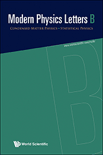
MODERN PHYSICS LETTERS B
Exploring contemporary challenges in physics research.MODERN PHYSICS LETTERS B, published by World Scientific Publishing Co Pte Ltd, is a pivotal journal in the fields of Condensed Matter Physics and Statistical and Nonlinear Physics. With an ISSN of 0217-9849 and an E-ISSN of 1793-6640, this journal has been a prominent platform for innovative physics research since its inception in 1996, catering to a global audience of researchers, professionals, and students alike. Its impact is reflected in its Scopus rankings, with a commendable position in the 65th percentile for Statistical and Nonlinear Physics and the 54th percentile for Condensed Matter Physics. Despite its classification in the Q3 quartile, MODERN PHYSICS LETTERS B is dedicated to advancing knowledge through rapid dissemination of high-quality research, thus playing a critical role in shaping future developments in its disciplines. Published in Singapore, the journal encourages contributions that address contemporary challenges and breakthroughs in physics, fostering an engaged scholarly community.

ACTA PHYSICA POLONICA A
Illuminating the Path of Innovative ResearchACTA PHYSICA POLONICA A is a distinguished peer-reviewed journal published by the Polish Academy of Sciences Institute of Physics, offering a platform for disseminating cutting-edge research in the field of physics and astronomy. With an ISSN of 0587-4246 and an E-ISSN of 1898-794X, this journal has been a staple for scholars since its inception, converging its publication years from 1996 to 2024. Despite its current Q4 classification in the Physics and Astronomy (miscellaneous) category, ACTA PHYSICA POLONICA A provides valuable insights and breakthroughs addressing various aspects of general physics. Researchers, professionals, and students will find a wealth of knowledge within its pages, even as it operates in an evolving academic landscape. While subscription options exist, the journal aims to foster collaboration and knowledge exchange in the physics community, making it a vital resource for those seeking to stay at the forefront of research advancements.
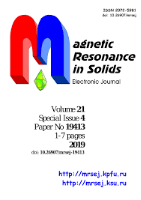
Magnetic Resonance in Solids
Fostering Innovation in Magnetic Resonance ResearchMagnetic Resonance in Solids is a pioneering open-access journal, published by Kazan Federal University in the Russian Federation since 2006. With an ISSN of 2072-5981, this journal focuses on a diverse array of disciplines within Atomic and Molecular Physics, Electronic, Optical and Magnetic Materials, Nuclear and High Energy Physics, and Spectroscopy. Although its impact factor currently places it in the fourth quartile across multiple categories, the journal provides invaluable insights into the evolving field of magnetic resonance, informing researchers and professionals alike. It features a wide range of original research articles, review papers, and technical notes that foster the exchange of knowledge in solid materials characterization through magnetic resonance techniques. Despite facing competitive rankings, its open-access nature ensures broad dissemination of critical findings, appealing to a global audience of scientists, academics, and students seeking to advance their understanding of solid-state phenomena. The journal is continuously committed to promoting high-quality research and fostering innovation in its areas of study.
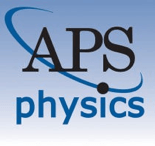
PHYSICAL REVIEW B
Pioneering Research in Condensed Matter DynamicsPHYSICAL REVIEW B, published by the American Physical Society, is a leading journal in the field of condensed matter physics and materials science, particularly focusing on electronic, optical, and magnetic materials. With an ISSN of 2469-9950 and an E-ISSN of 2469-9969, this periodical has garnered a prestigious reputation, achieving a Q1 ranking in both relevant categories as of 2023. The journal has recorded significant impact as reflected in its Scopus ranks, notably positioned at #95 out of 434 in Condensed Matter Physics and #75 out of 284 in the Materials Science sector, illustrating its importance in advancing research and discussions in these critical areas. Although it does not offer open access, PHYSICAL REVIEW B remains an invaluable resource for academics, researchers, and professionals seeking to increase their understanding of contemporary issues in condensed matter and material sciences. Established in 2005, this journal continues to foster innovation and dissemination of knowledge, making it a cornerstone publication for those engaged in cutting-edge research.

EUROPEAN PHYSICAL JOURNAL B
Illuminating the Path of Physics Through Open AccessEUROPEAN PHYSICAL JOURNAL B (ISSN: 1434-6028, E-ISSN: 1434-6036), published by Springer, is a prominent international journal based in Germany that focuses on the fields of Condensed Matter Physics and Electronic, Optical and Magnetic Materials. With a converged publication timeline from 1998 to 2024, it caters to a diverse audience that includes researchers, professionals, and students striving for the latest advancements in these vital areas of physics. The journal is recognized with a Q3 ranking in both relevant categories for 2023, showcasing its solid yet notable standing within the academic community. Although currently without an H-index, its Scopus rankings reflect a percentile performance of 41st and 39th, respectively, indicating a growing influence among its peers. The journal offers open access options, ensuring that groundbreaking research is widely accessible and contributes to the collective knowledge within the scientific domain. By aiming to publish high-quality, well-researched articles, the EUROPEAN PHYSICAL JOURNAL B plays a crucial role in disseminating innovative findings and fostering collaboration in the field of physics.
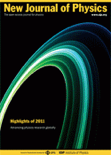
NEW JOURNAL OF PHYSICS
Empowering researchers with open-access knowledge.NEW JOURNAL OF PHYSICS, published by IOP Publishing Ltd, is a prestigious open-access journal that has been at the forefront of the physics community since its inception in 1998. With an impact factor that places it in the Q1 category of Physics and Astronomy (miscellaneous) and a commendable ranking of #49 out of 243 in the general physics and astronomy category according to Scopus, this journal is recognized for its significant contribution to advancing research in the field. The journal caters to a broad scope of topics, providing a platform for the dissemination of cutting-edge research findings and innovative theoretical explorations. Operating from the United Kingdom, it offers a truly international perspective, making its contents accessible and impactful to a global audience. With robust open-access options, the NEW JOURNAL OF PHYSICS ensures that research findings are freely available, promoting collaboration and knowledge sharing among researchers, professionals, and students alike. This commitment to accessibility, combined with its high-quality content, makes it an essential resource for anyone engaged in the physics community.

PHYSICS OF THE SOLID STATE
Exploring Innovations in Condensed Matter PhysicsPhysics of the Solid State is a distinguished journal published by Pleiades Publishing Inc., focusing on the rapid advancements and fundamental research in the realms of condensed matter physics, electronic, optical, and magnetic materials. With an ISSN of 1063-7834 and an E-ISSN of 1090-6460, this journal serves as a crucial platform for disseminating high-quality research findings, insights, and reviews essential for both academic and industrial professionals in the field. As of 2023, its Scopus ranking places it in the 26th percentile for both Condensed Matter Physics and Electronic, Optical and Magnetic Materials, reflecting its evolving influence and contribution to the scientific community. Although currently classified in the Q4 quartile, the journal aims to foster interdisciplinary dialogue, improve research visibility, and enhance its impact on contemporary scientific challenges through rigorous peer-reviewed articles and focused special issues. Despite its traditional model of access, it continues to play a pivotal role in engaging researchers and fostering innovation in solid-state physics.

Science China-Physics Mechanics & Astronomy
Empowering Researchers with Cutting-edge InsightsScience China-Physics Mechanics & Astronomy, published by SCIENCE PRESS, stands as a prestigious journal within the Physics and Astronomy domain, particularly recognized for its contributions to the understanding of fundamental and applied physics. With an exhilarating Q1 ranking in the 2023 category and earning a remarkable scopus rank of #21 out of 243, the journal demonstrates its significant impact, being positioned in the 91st percentile of its field. Operating under an Open Access model, it facilitates the broad dissemination of high-quality research, ensuring accessibility for researchers, professionals, and students worldwide. Its scope covers a variety of essential topics in physics and astronomy, promoting a comprehensive understanding of the latest advancements from 2010 through 2024. The journal is a vital resource for anyone aiming to stay at the forefront of research in these dynamic fields, with its prominent address located in Beijing, China, symbolizing its global influence.